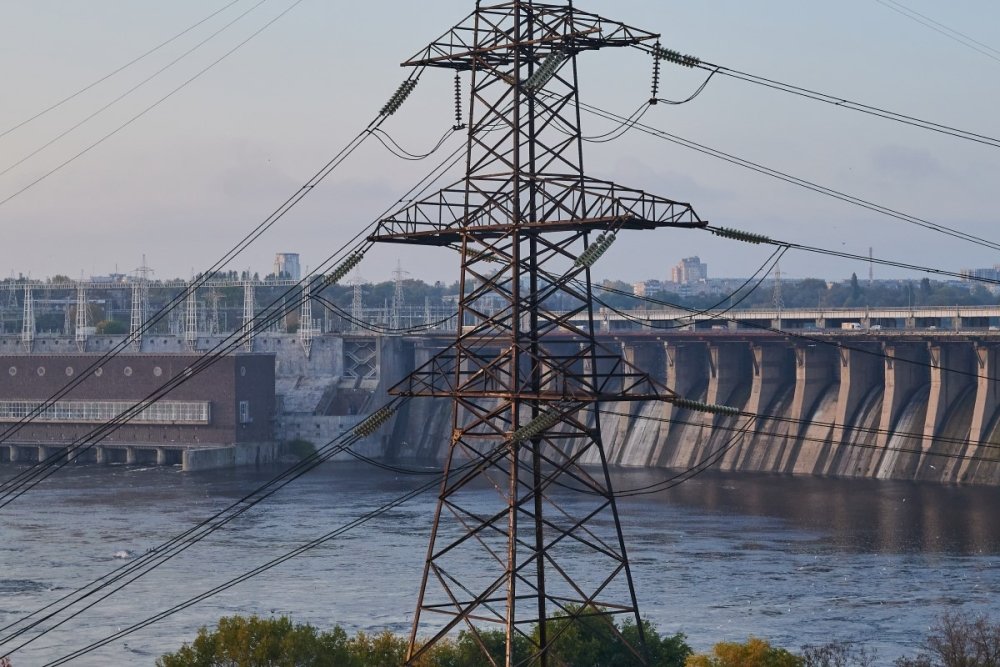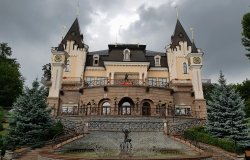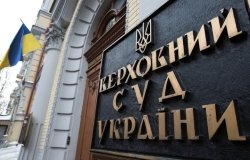
A blog of the Kennan Institute
Ukraine’s Energy Outlook for the Remainder of 2024

Ukraine passed the winter of 2023–2024 better than expected. Daily electricity exports from Ukraine in early March set a record since the start of the wide-scale invasion. The situation may seem to have eased, but Ukraine’s energy sector still faces severe challenges during the rest of 2024.
A Look Back at the Winter
The Ukrainian power system entered last winter without sufficient reserves. Existing capacities, together with allowed import capacities from the EU, were barely enough to cover peak winter demand. The relatively warm winter meant lower demand than usual, however, easing the situation, and Ukraine’s huge water reserves allowed increased hydropower generation. During the winter, the energy companies set about repairing facilities that had been damaged earlier. Nonetheless, capacity availability remained roughly unchanged in early spring.
Ukrainian energy markets are in crisis because of huge debts and nonpayments of more than $8 billion. Consequently, the energy companies are suffering from a liquidity squeeze and the lack of funds to repair damaged capacities, let alone construct new facilities. The lack of funds may also constrain a maintenance program scheduled for the summer. Such a maintenance program is required for stable power system operation in the coming winter.
But spring has brought new attacks and significant damage, diverting resources needed for maintenance. On March 22, Russia launched the most massive attack yet on the Ukrainian power system, with smaller attacks in the following days. A panoply of drones and ballistic and cruise missiles was used in these attacks. The power system temporarily lost significant capacity.
Expectations for Summer 2024
Summer may also be challenging for the power system. As nuclear power plants go offline for planned maintenance, the national nuclear power company Energoatom will produce less and earn less. Energoatom is the main donor that subsidizes households' electricity tariffs. Despite the 70 percent tariff increase last summer, revenues still do not cover the cost of producing and distributing energy to households.
The energy companies involved in supplying electricity to households are among those with large debt burdens. So, when Energoatom earns less in the summer, it will pay less to subsidize households’ consumption, which will increase outstanding debts in the electricity market.
If the summer is hot, higher demand in the context of diminished available capacity (as some infrastructure will be undergoing maintenance) could see the power system facing a capacity deficit. If so, gas might have to be used for electricity production, and Ukraine might become more dependent on electricity imports. In the event of a hot summer, electricity prices in Europe would likely be higher as well because nuclear and hydropower plants would decrease their output. All this would make Ukraine’s energy imports expensive.
With the price caps in the Ukrainian electricity market, expensive imports may be economically unviable. In such a case, the transmission system operator Ukrenergo would be urged to rely on technical emergency aid from neighboring states, which is usually more expensive than commercial imports and not always available. Under that scenario, Ukraine would find itself spending money on this aid from abroad but not paying for local companies’ services, thereby increasing debts. To summarize, summer may mean capacity shortages and deepening financial problems in the electricity market.
If Russian air attacks do not further damage the power system, Ukraine will enter the winter of 2024–2025 in about the same condition as it entered last year’s winter, and likely with a deficit of capacities. But there is no reason to believe Russia will stay its hand and refrain from more attacks on Ukraine’s energy facilities, so expectations should be lowered.
Fresh Attacks on the Energy Sector Are Expected
Ukraine sustained little new damage to energy facilities during October–December 2023 but did so during January–February 2024 in front-line regions in Kharkiv and Dnipropetrovsk oblasts. Little damage incurred in late 2023 does not mean Russia did not try to attack the energy infrastructure. The number of drones Russia launched during October–December broke records since the invasion started. Most were brought down by the Ukrainian air defense, so we do not know the intended targets of these drones.
In early 2024, Russia changed its tactics and aimed more at front-line regions—the easiest to reach. The attacks damaged power plants and substations, resulting in power cutoffs. Russia is expected to continue these attacks, especially if Western military aid, particularly in the form of air defense missiles, is delayed. The March attacks worsened the situation in the front-line regions.
The attacks may even occur during summer, exacerbating the energy sector’s vulnerability in terms of potential capacity shortages. The front-line regions are particularly in danger. Damage to the energy infrastructure will lead to decreased revenues for energy companies and worsen their financial condition. It will also mean a need for additional funds for restoration, which companies lack even now.
Coal and Gas
Potential damage to the power system will worsen Ukraine’s ability to get through next winter. Just as important is gas and coal production, which is also in danger, as a considerable share of the mines and refineries is again in the front-line regions—Kharkiv and Dnipropetrovsk oblasts. Coal mining has already suffered from work stoppages because of strikes this year.
Military analysts think Russia could unleash an offensive in the direction of Kharkiv in the summer, which could also threaten gas production.
Disinformation and Psychological Operations
Attacking the energy infrastructure in the East of Ukraine may be part of Russia’s campaign to divide society between those with power supply problems in the East and those elsewhere, who do not face such problems. Russia has used this divide and conquer tactic in its attacks on Ukraine in the past.
The issue of utility tariffs is quite sensitive for society. If financial problems in energy markets and additional damages prompt the government to start discussing the need to raise tariffs, this will definitely be emphasized by Russia in its anti-Kyiv campaigns. The recent investigation by the Washington Post into Russia’s disinformation campaign to undermine the government shows that energy topics were also weaponized. Deliberate falsification of energy information may become more widespread in 2024.
Automotive Fuels
Fuel demand is recovering in Ukraine, but domestic production is under Russian attack, so the country relies on imports. However, protests at the borders, mainly in Poland, have caused delays in goods transfers, including fuel. These strikes will likely disappear after local elections in Poland in April. However, Romania, which is another important fuel-transiting country for Ukraine, will hold four elections this year. So the country may also see some strikes, affecting fuel delivery. In early 2023 the Romanian government resolved the strikes quickly.
In general, despite all these obstacles, the situation in the fuel market is expected to be stable. The worst scenario, which is very unlikely, would entail Poland suspending trade with Ukraine officially and some instability happening in Transnistria, creating problems for imports in the South. In that case, the fuel crisis probably will not be deeper than Ukraine experienced in the spring of 2022. However, this will be a sensitive issue for the population and one that Russia may weave into its disinformation campaigns.
In 2024, the energy situation will depend heavily on Ukraine’s ability to protect its infrastructure. However, two nonmilitary issues will also shape developments: the need to soften the debt crisis and the need to identify and counteract Russia’s disinformation and psychological operations.
The opinions expressed in this article are those solely of the author and do not reflect the views of the Kennan Institute.
See our newest content first.
Subscribe to receive the latest analysis from Focus Ukraine
About the Author

Andrian Prokip
Director, Energy Program, Ukrainian Institute for the Future

Kennan Institute
The Kennan Institute is the premier US center for advanced research on Eurasia and the oldest and largest regional program at the Woodrow Wilson International Center for Scholars. The Kennan Institute is committed to improving American understanding of Russia, Ukraine, Central Asia, the South Caucasus, and the surrounding region though research and exchange. Read more













